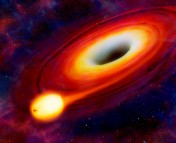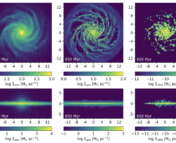Title: Missing Titanium in the Asymmetric Supernova Remnant W49B
Authors: Toshiki Sato, Makoto Sawada, Keiichi Maeda, John P. Hughes, Brian J. Williams
First Author’s Institution: Department of Physics, Meiji University, Japan
Status: Submitted to the Astrophysical Journal [open access]
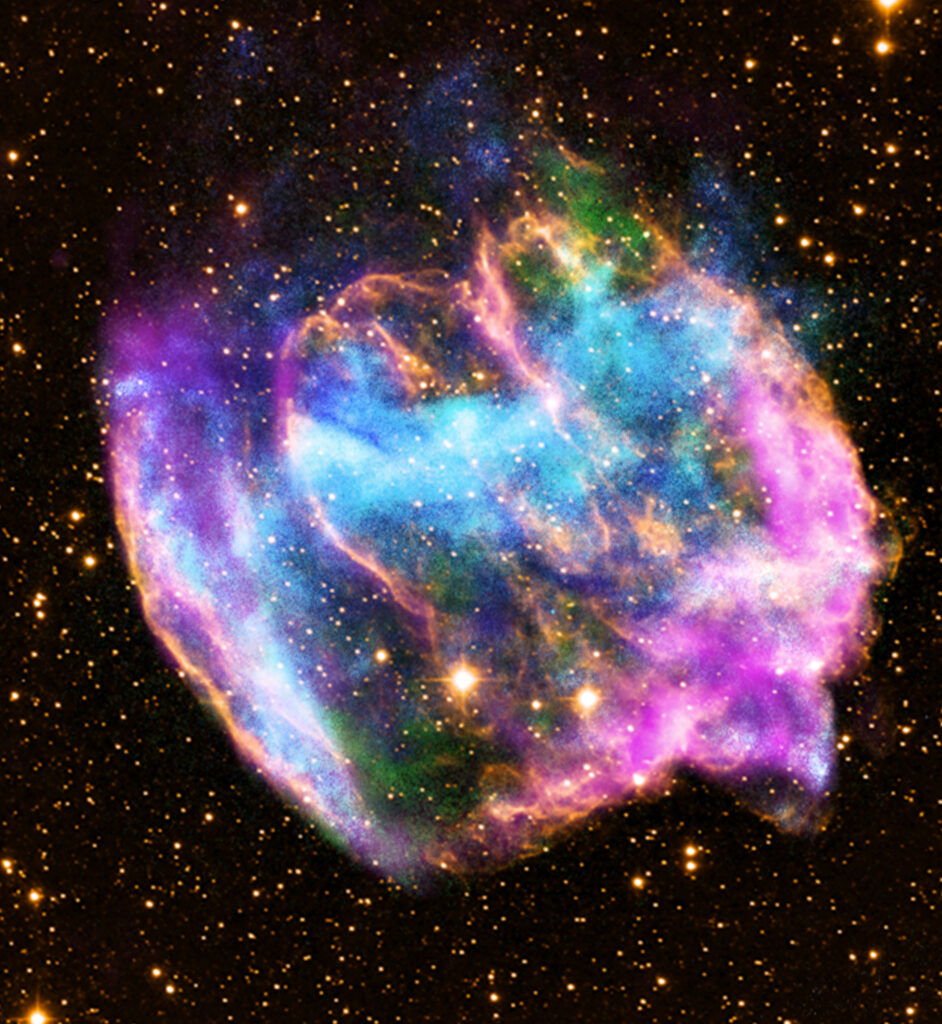
A lot of the time, astronomers are hoping to understand how things formed, and that’s no less the case than for supernova remnant W49B. However, for this galactic remnant of stellar death reminiscent of a watercolour painting, things aren’t so straightforward. Certain studies have shown it to be the result of a core-collapse supernova (the explosive death of a massive star), while others have proposed a Type Ia supernova origin (the cataclysmic end of a white dwarf).
In an attempt to resolve this conflict, the authors of today’s paper have used X-ray observations of W49B from the X-ray Space Telescope Suzaku to try to finally reveal its true nature. In particular, they studied the amount of stable titanium in W49B, hoping it would be the final piece in the complex jigsaw puzzle that is the backstory behind W49B.
Why titanium, you might ask? Well, since W49B is highly asymmetric (take a look at its barrel-shaped structure in Figure 1), astronomers believe it might have experienced a strong alpha-rich freeze-out if it is indeed the remnant of a core-collapse supernova. The alpha-rich freeze-out is a process which liberates large numbers of alpha particles (aka helium nuclei), which can then go on to produce heavy nuclei, including titanium. Therefore, the presence of titanium in the Suzaku observation shown in Figure 2 would indicate a core-collapse supernova origin.
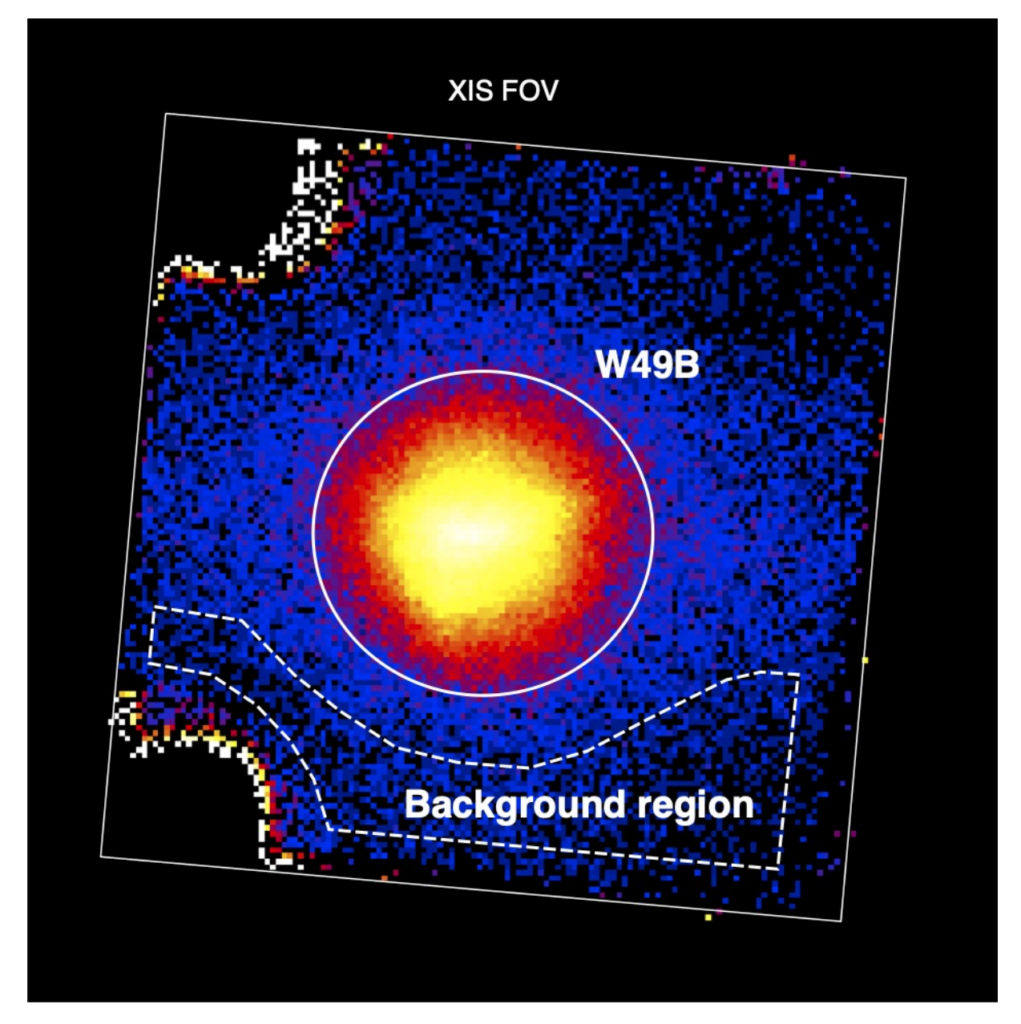
To search for evidence of titanium in W49B, the authors extracted the X-ray spectrum shown in Figure 3 from the Suzaku data. X-ray spectra are incredibly useful when trying to characterise the composition of supernova remnants, since each element emits specific frequencies of light due to its unique atomic structure. Therefore, the presence or absence of an element in a supernova remnant can be inferred from the bumps (known as line emission) in the X-ray spectrum.
For W49B, these bumps are labelled in Figure 3 panel (a), and are attributed to elements including calcium, chromium, manganese, and iron. The red label, Ti Kα, indicates the expected energy of one expected transition of titanium, the Kα transition. In panel (b), we see a zoomed-in view of the titanium Kα line. In this panel, the black line is the best-fit model to the data, while the red line is the model assuming the solar value of titanium that would indicate the presence of titanium in W49B. Evidently, the best-fit model deviates from the solar titanium model, leading the authors to conclude that there is no significant titanium emission from W49B, placing an upper limit on the titanium-to-iron mass ratio of 8.2 x 10^-4. Note that the titanium content of W49B is compared to its iron content as is typically the case when quantifying metallicities in astronomy.
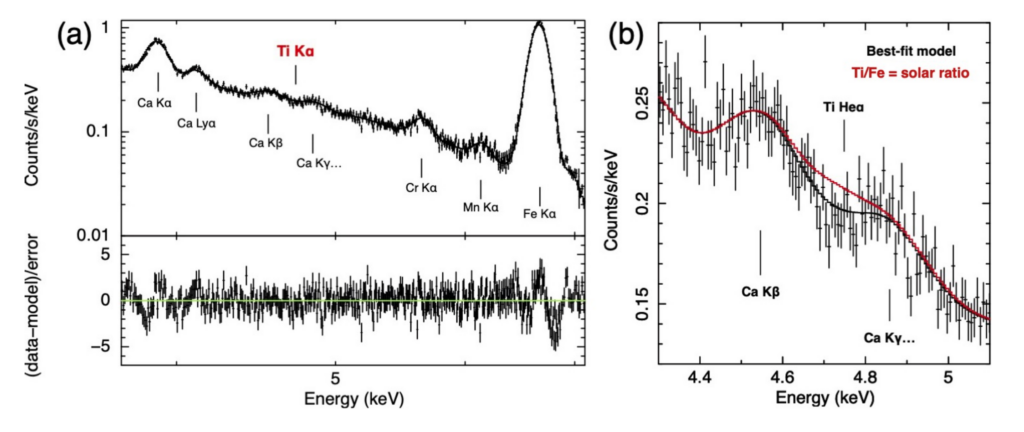
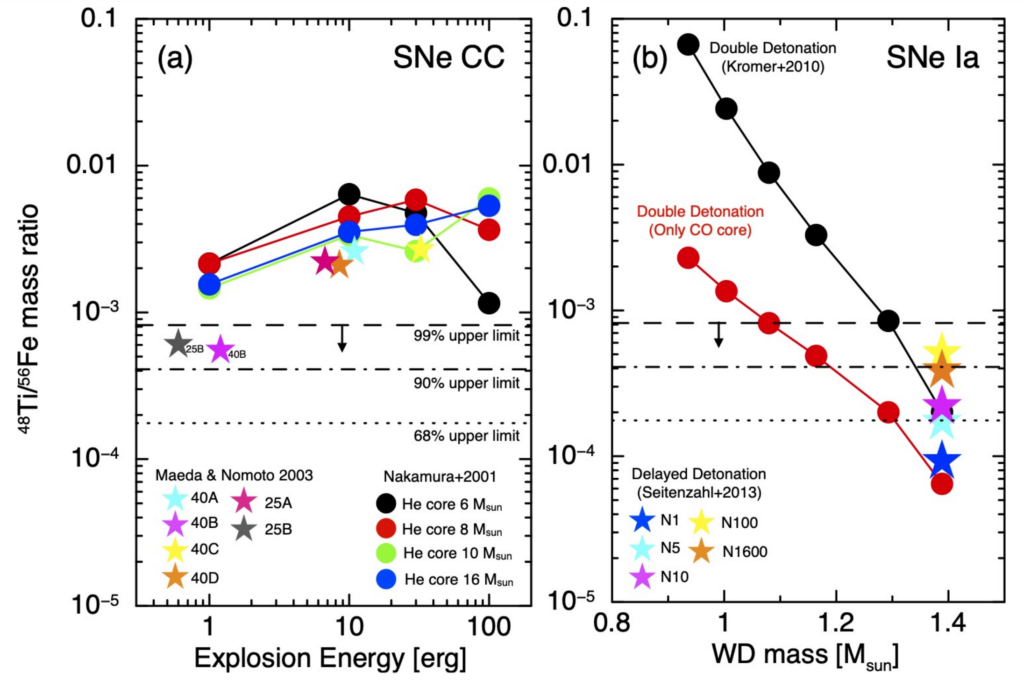
However, the authors didn’t stop there. They then compared their upper limit to a range of models for titanium production in core-collapse and Type Ia supernovae, as shown in panels (a) and (b) of Figure 4, respectively. For the core-collapse models, they found that almost all models were above their upper limit and thus were inconsistent with W49B’s X-ray spectrum. For the Type Ia models, on the other hand, they found that the delayed detonation models, in which a star detonates after a burning period, provided the best match to their titanium data for W49B.
So, it seems as if the lack of titanium points towards a Type Ia origin for W49B, and more specifically, to a delayed detonation scenario. However, for such a contentious supernova remnant, more evidence is needed. Hopefully, with the next generation of X-ray telescopes such as XRISM, our hazy view of W49B’s formation will become crystal clear.
Astrobite edited by Annelia Anderson
Featured image credit: X-ray: NASA/CXC/MIT/L.Lopez et al.; Infrared: Palomar; Radio: NSF/NRAO/VLA


